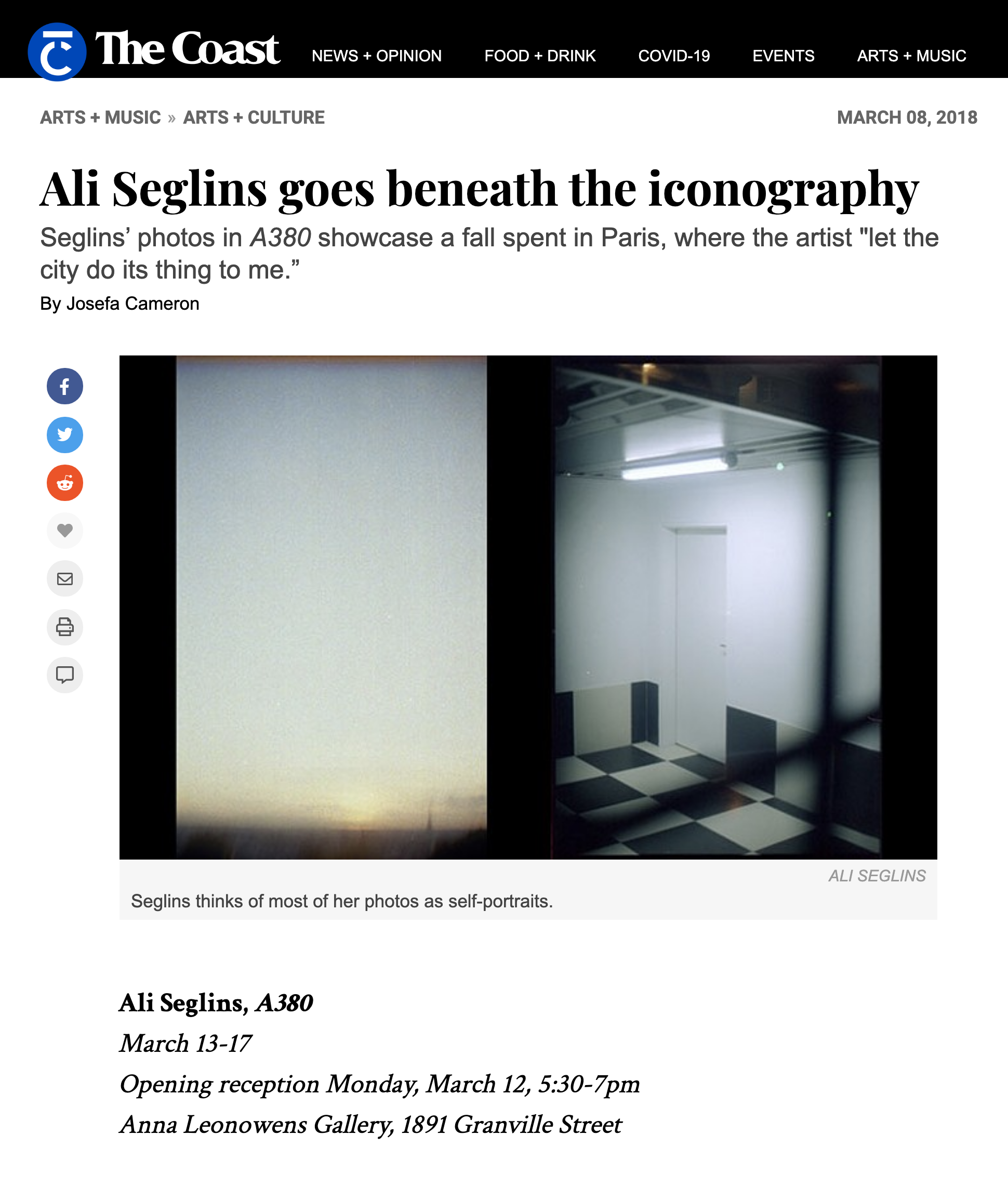Ali Seglins' new exhibit, A380, is named after the gate code of the apartment she lived in last fall in Paris. She'd won the Roloff Beny scholarship—awarded to a NSCAD student working in photography—and moved there for two months. There wasn't anything specific she had to do or anywhere she had to be; she had complete freedom. Her photography is the visual result of her trip. "It was very scary at first—I'd never been to Europe before and never travelled alone before. If I was not doing a project, I don't know what I would have done, because tourism is a strange thing to me, especially in the most touristic place in the entire world," says Seglins. "I try not to be romantic because I have these weird ideas about romanticizing things; especially Paris, I didn't want to romanticize it at all. I wasn't trying to celebrate it because it is already such an iconic place. I just wanted to view it how a person whose had so many vicarious, imaginary experiences and then go and see the real thing and reconcile the possible differences." Having studied French her entire life, Seglins is currently working on her BFA at the Nova Scotia College of Art and Design. Seglins' artistic interests have ties to Paris—including the Surrealist movement—and the Situationist International, an avant-garde art movement prominent in Europe. The practice of Dérive, according to philosopher Guy Debord, "is an unplanned journey through a landscape, usually urban, in which participants let themselves be drawn by the attractions of the terrain." "Basically, I wanted to be as naive as possible, go to this place I've heard so much about, and let the city do its thing to me," says Seglins. "I was interested to see what I would do if I didn't have a strict intention and see what would come out of that." Seglins shoots with film and used 27 rolls for her project. One elongated print, which will be on display in A380, is a warm and muddled arrangement of streetscapes and neon signs. "This one was taken one night I was walking home. I was shooting with my camera and then rewinding the film randomly," she says. "So it's all overlapped." Other photographs are on a vertical orientation, framed like portraits. She thinks of most photos as being self-portraits and decided to frame things and spaces, instead of people, in this way. "My interest in photography is pretty tied to subjectivity. I like looking at other people's photos, I think it is really interesting to see what other people are noticing and observing. So I try to look at my photos in the same way. I'm trying to be vague so that people can read it their own way," she says. "For me it is about access—I showed them to some teachers and they said other things. I like how people can see different things in them."
Read more at: https://www.thecoast.ca/halifax/ali-seglins-goes-beneath-the-iconography/Content?oid=13164570
